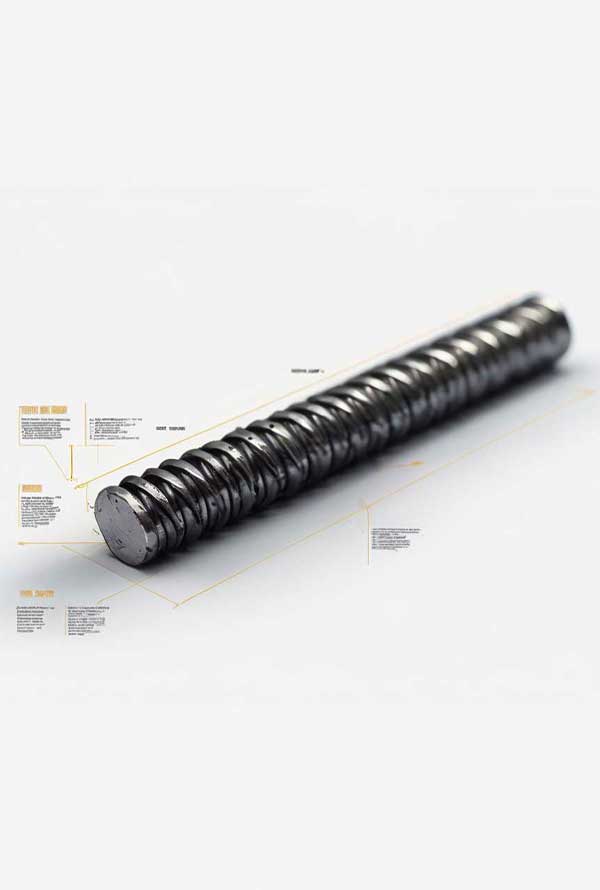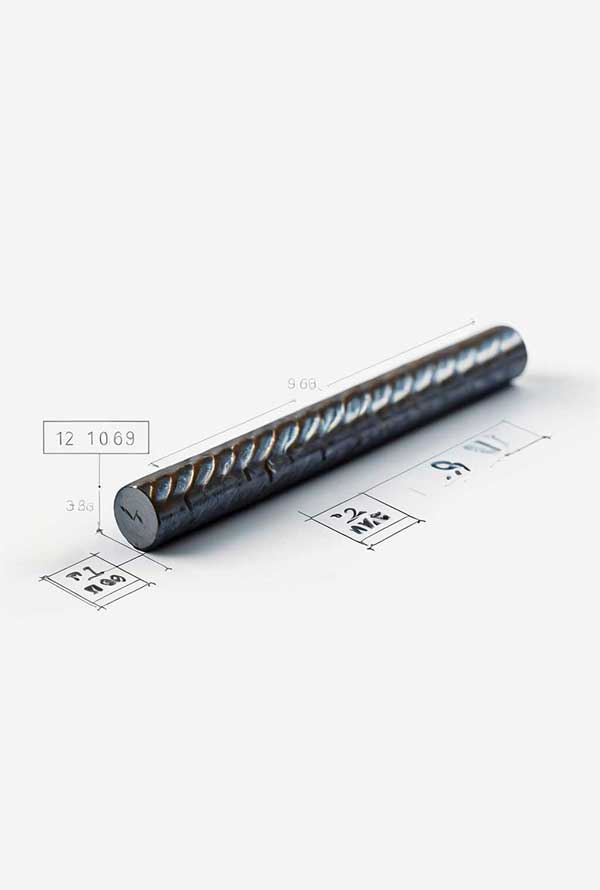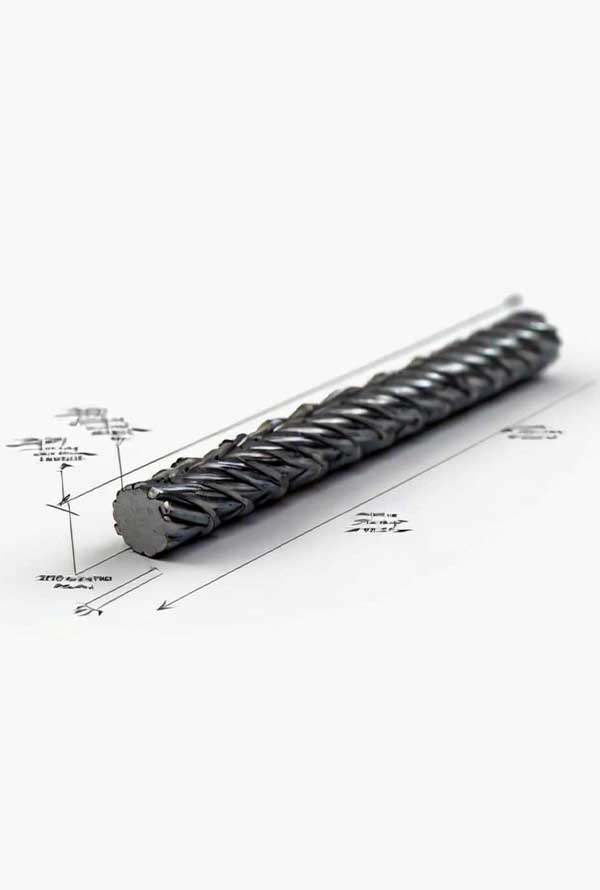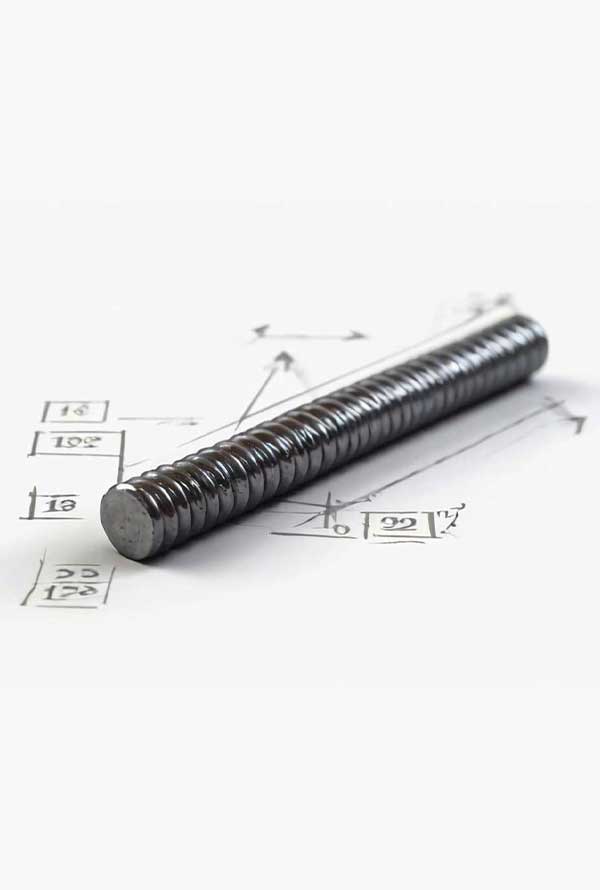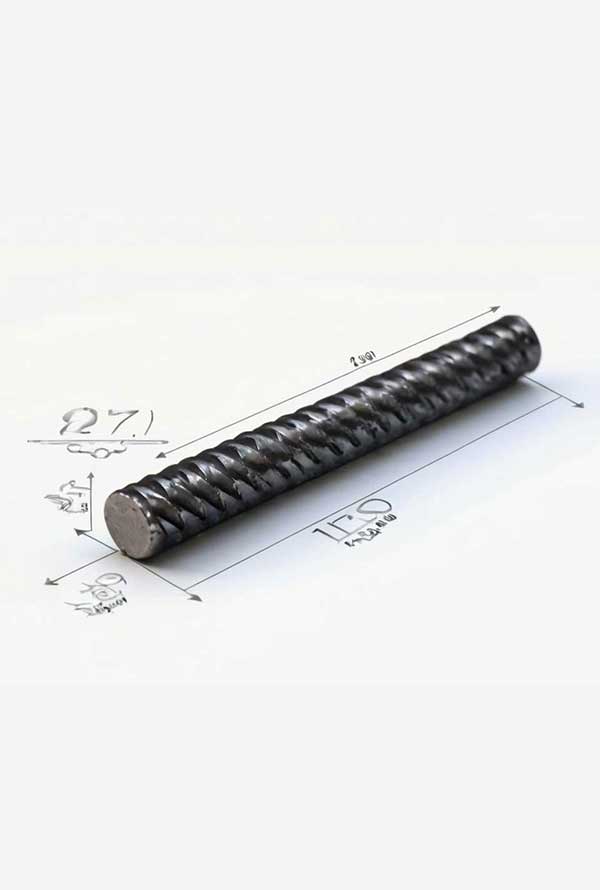Rebar 20, as one of the most widely used steel sections in the construction industry, is produced in various grades. In Iran, size 20 rebar is commonly manufactured according to standards such as A1 (plain), A3 (ribbed, angled), A4 (compound ribbed), and polished transit. Each of these grades offers different mechanical properties and applications for rebar.
Price of Rebar Size 20
The price of rebar 20, being a widely used steel section in construction and structures, is calculated based on its weight and measured in kilograms. Currently, the price per kilogram of size 20 rebar fluctuates between 23,000 and 26,000 Tomans.
It is worth noting that the price of size 20 rebar is continuously influenced by multiple factors, including global steel market fluctuations, exchange rates, production costs, domestic supply and demand, and government policies. Therefore, staying updated on the latest price changes is of significant importance for buyers and sellers of this product.
General Specifications of Size 20 Rebar
- Size: 20 mm
- Weight: Approximately 30 kg per 12-meter rod
- Standard Length of Rod: 12 meters
Types of Ribs and Production Methods for rebar 20
Size 20 rebar is typically manufactured with A3 ribs. This type of rib is angled on the surface of the rebar and creates excellent adhesion between the rebar and concrete after cooling. Thus, A3 ribbed rebars are widely used in structures subject to shear stresses, such as foundations and columns.
In terms of production methods, rebar 20 is manufactured using either alloying or thermomechanical (Tempcore) methods:
- Alloying Method: Molten steel is combined with various alloys before being formed into rebar.
- Tempcore Method: Steel billets are heated to high temperatures and then rolled into rebar.
Each production method offers unique characteristics, and selecting the appropriate method depends on factors such as the desired chemical composition, required mechanical properties, and production volume.
Markings on Rebar
rebar 20 features markings that provide essential information about its grade and production method. For instance:
- C: Indicates grade A3 (ribbed, angled).
- U: Denotes alloying production method.
- T: Denotes the Tempcore production method.
Importance of Choosing the Right Grade
Choosing the right grade of size 20 rebar depends on factors such as the type of structure, load capacity, environmental conditions, and design standards. For example, grade A3 rebar, due to its high rib adhesion to concrete, is more suitable for use in areas with high seismic activity.
Applications of Size 20 Rebar
Size 20 rebar, thanks to its favorable mechanical properties, such as high tensile and compressive strength, is used in the construction of various concrete and steel structures. These steel sections allow structural engineers to design and execute durable and high-strength structures.
Key Features of Size 20 Rebar
Size 20 rebar is among the most widely used steel sections in the construction industry, boasting prominent mechanical properties. Its high tensile and compressive strength makes it an ideal choice for bearing structural loads. Furthermore, the adequate flexibility of rebar 20 allows for the absorption of dynamic load energy and deformation caused by structural settlement.
Additionally, the numerous ribs on the rebar’s surface create excellent adhesion between the rebar and concrete, enhancing the bond strength between the two materials. This feature helps efficiently transfer stresses between concrete and steel, thereby improving structural strength and durability.
Primary Applications of Size 20 Rebar
Rebar 20 is used extensively in the construction industry due to its high strength, suitable flexibility, and excellent adhesion to concrete. Its main applications include:
- Construction of columns, beams, foundations, and bridges
- Anchor bolts and oil rig towers
- Industrial structures
- Structural reinforcement and load-bearing capacity improvement of old buildings
Overall, its high strength, adequate flexibility, weldability, and bending capability make rebar 20 an ideal choice for various structures, especially those subjected to heavy loads and harsh environmental conditions.
Technical Specifications of Size 20 Rebar
Size 20 rebar is generally sold in 12-meter lengths, with an approximate weight of 30 kg per rod.
Mechanical Specifications of Size 20 Rebar
The mechanical properties of rebar 20 vary depending on its grade (A2 or A3):
- Grade A2:
- Yield Stress: 3000 kg/cm²
- Ultimate Stress: 5000 kg/cm²
- Plastic Deformation: 19%
- Grade A3:
- Yield Stress: 4000 kg/cm²
- Ultimate Stress: 6000 kg/cm²
- Plastic Deformation: 14%
General Characteristics of Size 20 Rebar
Size 20 rebar is highly resistant to pressure, tension, and bending, making it a robust and reliable element in concrete structures. Additionally, its easy bending allows for the execution of complex and diverse connections, enhancing flexibility in structural implementation.
Moreover, its suitable tensile strength makes it highly suitable for handling tensile loads in seismic-prone areas. The relatively affordable price of rebar 20 compared to other steel sections also makes it an economical option for builders. Its corrosion resistance ensures usability in moist and corrosive environments, such as coastal and industrial regions.
Weight Standards
According to Stahle weight tables, the weight of a 12-meter size 20 rebar rod should range between 28.164 kg and 31.128 kg. Any significant deviation from this weight range indicates defects in the production process or product transportation.
Production Methods of Size 20 Rebar
Size 20 rebar plays a critical role in bearing tensile, compressive, and bending loads in structures. Therefore, its production adheres to strict national and international standards to ensure optimal performance under various conditions.
Factors Affecting Quality
The quality of rebar 20 is not limited to its production method but is also influenced by several factors. The chemical composition of the steel used significantly impacts its mechanical properties. Elements and their ratios directly affect the rebar’s strength, ductility, and other features.
Adherence to national and international standards during production ensures product quality and safety, preventing the manufacture of substandard items. Additionally, quality control tests during various production stages, including tensile, bending, and impact tests, are crucial to ensuring the uniformity and quality of the final product.
Types of Ribs on Size 20 Rebar
Size 20 rebars typically feature ribs designed to enhance adhesion to concrete and improve structural performance. These ribs are classified into two main categories: transverse and longitudinal. Transverse ribs, perpendicular to the rebar’s longitudinal axis, increase the bond strength between the rebar and concrete, preventing slippage.
This type of rib creates an uneven surface, enhancing the contact area between the rebar and concrete, thereby forming a stronger bond. On the other hand, longitudinal ribs, aligned with the rebar’s length, contribute to the rebar’s tensile strength and prevent concrete cracking around it.
Effect of Rib Type on Rebar Price
The rib type is one of the factors influencing the price of rebar. Rebars with more complex rib patterns and production processes typically cost more. Grade also affects the price, with A3 rebar generally priced higher than A2 due to its superior rib adhesion and wider applications.
Conclusion
Size 20 rebar from Sirjan Hadid Steel, with guaranteed quality and cost-effectiveness, offers an ideal solution for various construction projects. Purchasing this product ensures a standard, durable, and resilient structure. By buying rebar at factory prices, you not only reduce costs but also benefit from direct procurement from the manufacturer. Take action today to acquire this exceptional product and enjoy superior quality.
